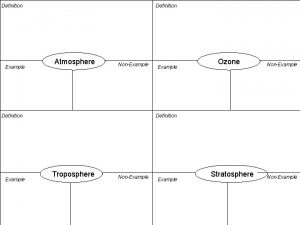Research approach Introduction What is Research Research Definition











- Slides: 11

Research approach: Introduction: What is Research? Research Definition: Research is defined as a careful consideration of study regarding a particular concern or a problem using scientific methods. According to the American sociologist Earl Robert Babbie, “Research is a systematic inquiry to describe, explain, predict and control the observed phenomenon. Research involves inductive and deductive methods. ”

Inductive research methods are used to analyze the observed phenomenon and are associated with qualitative research. Deductive methods are used to verify the observed phenomenon, deductive methods are more commonly associated with quantitative research. One of the most important aspects of research is the statistics associated with it, conclusion or result. It is about the “thought” that goes behind the research. Research is conducted with a purpose to understand: • What do study really want to find out? • What are the processes that need to be followed to chase the idea? • What are the arguments that need to be built around a concept?

Deductive process in research approach Inductive process in research approach

Characteristics of Research 1. A systematic approach is followed in research. Rules and procedures are an integral part of research that set the objective of a research process. Researchers need to practice ethics and code of conduct while making observations or drawing conclusions. 2. Research is based on logical reasoning and involves both inductive and deductive methods. 3. The data or knowledge that is derived is in real time, actual observations in the natural settings.

4. There is an in-depth analysis of all the data collected from research so that there are no anomalies associated with it. 5. Research creates a path for generating new questions. More research opportunity can be generated from existing research. 6. Research is analytical in nature. It makes use of all the available data so that there is no ambiguity in inference. 7. Accuracy is one of the important character of research, the information that is obtained while conducting the research should be accurate and true to its nature.

For example, research conducted in a controlled environment like a laboratory. Here accuracy is measured of instruments used, calibrations, and the final result of the experiment.

What are the types of Research? Following are the types of research methods: Basic Research: Basic research is mostly conducted to enhance knowledge. It covers fundamental aspects of research. The main motivation of this research is knowledge expansion. It is a non-commercial research and doesn’t facilitate in creating or inventing anything. For example, an experiment is a good example of basic Research. Applied Research: Applied research focuses on analyzing and solving real-life problems. This type of research refers to the study that helps solve practical problems using scientific methods.

This research plays an important role in solving issues that impact the overall well-being of humans. For example, finding a specific cure for a disease Problem Oriented Research: As the name suggests, problem-oriented research is conducted to understand the exact nature of the problem to find out relevant solutions. The term “problem” refers to having issues or two thoughts while making any decisions. Problem Solving Research: This type of research is conducted by companies to understand resolve their own problems. The problem-solving research uses applied research to find solutions to the existing problems.

Qualitative Research: is a process that is about inquiry, that helps in-depth understanding of the problems or issues in their natural settings. This is a non- statistical research method. Qualitative research is heavily dependent on the experience of the researchers and the questions used to probe the sample. The sample size is usually restricted to 6 -10 people in a sample. Open-ended questions are asked in a manner that one question leads to another. The purpose of asking open-ended questions is to gather as much information as possible from the sample.

Following are the methods used for qualitative research: • • • One-to-one interview. Focus groups. Ethnographic Research. Content/ Text Analysis. Case study research. Quantitative Research: this research method uses a computational, statistical and similar method to collect and analyze data. Quantitative data is all about numbers. Quantitative research involves a larger population as more number of people means more data. In this manner, more data can be analyzed to obtain accurate results

This type of research method uses close-ended questions because, in quantitative research, the researchers are typically looking at measuring the extent and gathering foolproof statistical data. Online surveys, questionnaires, and polls are preferable data collection tools used in quantitative research. There are various methods of deploying surveys or questionnaires. In recent times online surveys and questionnaires have gained popularity. Survey respondents can receive these surveys on mobile phones, emails or can simply use the internet to access surveys or questionnaires.
 Virtual and datagram networks
Virtual and datagram networks Cognitive approach vs behavioral approach
Cognitive approach vs behavioral approach What is preliminary and fine grain screening?
What is preliminary and fine grain screening? Multiple approach-avoidance
Multiple approach-avoidance Cognitive approach vs behavioral approach
Cognitive approach vs behavioral approach Research approach meaning
Research approach meaning Approach to system development
Approach to system development Deep learning approach and surface learning approach
Deep learning approach and surface learning approach Is an explanation
Is an explanation A formal approach to game design and game research
A formal approach to game design and game research Research approach
Research approach Systematic approach to research
Systematic approach to research





















